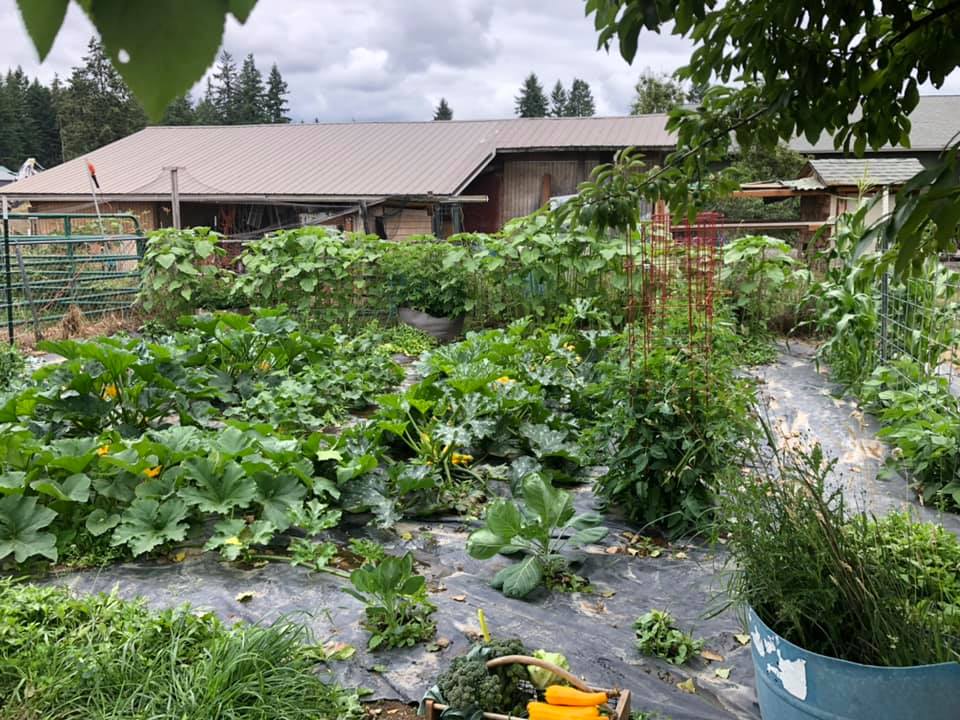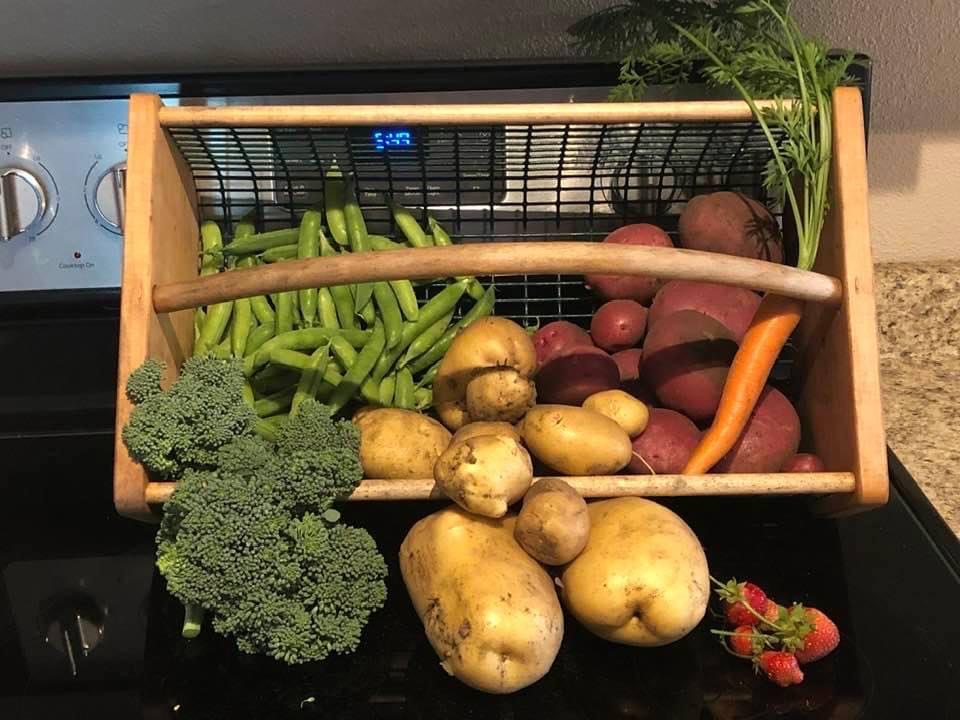Eating organic isn’t a trend. It’s a return to tradition.
The Farmacy
I have caught a lot of nonsense over the years for eating (mostly) organic. One of the most common comments I hear is “Do you really think it makes that big of a difference?” Well… yes. Yes I do. I will be the first to admit that I am so far from perfect with my organic, whole food eating that it isn’t even funny. I struggle with my weight, and I am type 2 diabetic. My drink of choice? Diet Coke. That doesn’t mean that I don’t care, and it doesn’t mean I haven’t done the research. It just goes to show that even when you know everything you are supposed to do, it isn’t easy! I will say though, that after my research on the Dirty Dozen I am probably more motivated than I have been in a LONG time to clean up our diet around here.
What is the Dirty Dozen?
The term “Dirty Dozen” should strike fear in anyone who reads it. If it doesn’t now, you just wait. Every year the Environmental Working Group, or the EWG, puts out 2 lists based on the findings of pesticide levels in produce. These lists have been dubbed “The Dirty Dozen” and “The Clean Fifteen”. Basically, the EWG analyzes the findings of studies done by the USDA and the FDA on over 45,000 samples of produce, then ranks the produce starting at number 1 and going down the list, with number 1 having the highest level of pesticides found on that produce. (The EWG classifies pesticides as anything used to kill a living organism. This includes herbicides.) The top 12 numbers are the Dirty Dozen, while the last 15 slots on the long list are the Clean Fifteen. The list was just updated on April 7th. Here are the fruits and veggies who made it onto the Dirty Dozen list this year-
- Strawberries
- Spinach
- Kale, collard and mustard greens
- Nectarines
- Apples
- Grapes
- Bell and hot peppers
- Cherries
- Peaches
- Pears
- Celery
- Tomatoes
These fruits and veggies are full of necessary vitamins and minerals and should not be taken off your grocery list! Buying organic is expensive, and not in the budget for everyone, not even me. The goal of this list is to point out the produce that we SHOULD be buying organic.

The Scary Facts
More than 70% of non-organic produce in the United States has residues of potentially harmful pesticides. Keep in mind these are residues that are of a high enough amount that they are easily detected by testers. I am no scientist, nutritionist, doctor, or anything fancy like that, but I find that unacceptable and frankly quite alarming! 70%! What I also find concerning is that the USDA doesn’t test every crop type every year. That means that the checks and balances used to keep us “safe” can go 2 years without being checked and balanced. A lot can be damaged in 2 years.
Th Department of Agriculture and the Food and Drug Administration recently put out findings that show over 50% of potatoes, spinach, lettuce, and eggplant have detectable levels of at least 1 of 3 bee-killing neonic pesticides. These specific pesticides have been banned in the European Nation but are still going strong and allowed here in the United States. Say what?!
Love peppers? Several pepper samples showed concerning levels of pesticides that harm the nervous system such as oxamyl, acephate, and chlorpyrifos. These pesticides have been banned on some US crops, and have been banned entirely in the European Nation, however they are still showing up at high levels.
There are far too many pesticides for me to go into details on them all, so for time’s sake we will just talk about the heavy hitters. The first being DCPA or Dacthal. This is the pesticide most commonly found on collards, mustard greens, and kale and has been classified as a possible human carcinogen. This pesticide was banned by the European Nation in 2009, but guess what? Still used regularly here in the United States.

The most heavily used pesticide in the United States is glyphosate. Glyphosate is found in very high levels on grain and bean crops like oats and chickpeas. Even though glyphosate is the most heavily used pesticide in the United States, and is found in high levels on grain and bean crops, the USDA doesn’t analyze those particular crops for glyphosate. It is used very commonly to help ripen these types of crops, as it’s main use is as a herbicide. Glyphosate is sprayed on the grain and bean crops to dry them out, making them ready to harvest. The EWG commissioned tests on these types of crops and found almost 3/4 of oat based food samples, many popular with children (Quaker Old Fashioned Oats and Cherrios were the 2 named) had pesticide residue levels higher than what EWG scientists consider “protective of children’s health”. Glyphosate has been at the center of some pretty heated debates for a long time. Most scientists agree that short term exposure is considered low risk and won’t likely have detrimental effects on your health, however long term exposure is seen as concerning. (Think about eating a bowl of cereal each morning. That’s 365 bowls of cereal in a year. I personally consider that long term exposure, and that’s just ONE source of exposure.) Here is where the conflict comes in- most studies have shown that long term exposure can cause anything from cancer, liver and kidney damage, reproductive and developmental issues, to increased risks for pregnant women and children. The EPA says this is not true and there are no links to these concerns. Conflict.
Pesticides and Our Kids
I think one of the most alarming things I read while doing research for this was the effects that commonly used pesticides have on children. It was also alarming to me to read some of the very well known brands of foods, marketed towards busy families and kids, that had high levels of pesticides detected in the finished product. In a time where our children are struggling more and more to function in their day to day life and are having health problems at very concerning rates, I think it is well past time to start looking at what we are feeding their little bodies. (Of course there is the whole structure of our public school system, lack of play, and more of my opinions for another discussion…)
In 2012 the American Academy of Pediatrics issued a report that children have “unique susceptibilities to pesticide residues’ potential toxicity”. Hang on… didn’t we just read that a very common children’s cereal, one that is usually a “first finger food” for older babies/ young toddlers, has higher than normal levels of pesticide residue? We have got to do better than that! Multiple studies have linked pesticide exposure in early life to pediatric cancers, decreased cognitive function, and behavioral problems.
The good news, is we CAN do better!
The Clean Fifteen
I hope the Dirty Dozen raised some concern and maybe got your wheels turning. My intention with this little piece of my mind isn’t to scare everyone, but rather to lay out facts and then offer solutions, so here we go. The Clean Fifteen! This list is the cleanest produce-
- Avocados
- Sweet Corn
- Pineapple
- Onions
- Papaya
- Frozen Sweet Peas
- Asparagus
- Honeydew Melon
- Kiwi
- Cabbage
- Mushrooms
- Cantaloupe
- Mangoes
- Watermelon
- Sweet Potaotes
The cleanest of all the produce was avocados and sweet corn with only 2% of samples showing detectable pesticides. The produce on the Clean Fifteen list is considered safe to buy non-organic for the sake of your budget.

Where Do We Go From Here?
For me, the stress of trying to do the best for my family can be overwhelming sometimes. Especially when I start reading studies and watching documentaries, but my daughter just wants a Kinder Egg. I have set a couple guidelines for myself with my research that has helped, with the biggest being to look at who paid for the studies. Science can be greatly swayed by who is providing the funding and big corporations like Pepsi, Quaker, and so on will definitely fund studies. Always look at the money behind the findings!
Clearly, the best solution to this is to plant your own garden and grow your own food. Eat as much fresh as you can, then preserve the rest of your harvest by canning or freezing to feed your family throughout the months when fresh local produce isn’t easily found. Here are a couple tips on getting your own garden started https://thehuskissonhomestead.com/2022/04/07/spring-means-gardening/

My second suggestion is to shop farmer’s markets, and get to know your local farmers. Did you know that getting your farm certified organic is very expensive? Many smaller farms simply can’t afford to get certified, so even if they are following the organic practice, they can’t legally label their produce as organic. Talk to them! I have found that the farmers I talk with at our local farmer’s market are more than willing, and actually get pretty excited, to talk with customers about how they run their operation. Most of our local farms also offer “canning boxes” which I will buy to supplement my garden and fill up my storage shelves with canned yumminess minus the pesticides. If you aren’t sure where to find your local farmer’s market, look here http://www.localharvest.org
If you are going to be buying produce at the grocery store, buy as much organic as possible. Organic doesn’t mean they don’t use pesticides. The organic standards prohibit the use of synthetic pesticides, meaning the farmers who grow organic protect their crops with more natural means, making them safe for us to consume. If a full cart of organic produce is beyond your budget, take a screenshot of that Dirty Dozen list and take it shopping with you- those items should be organic in your cart.
Happy shopping!
~Tara
